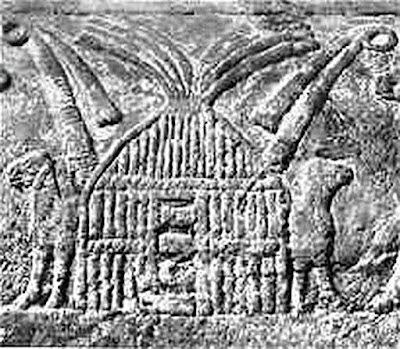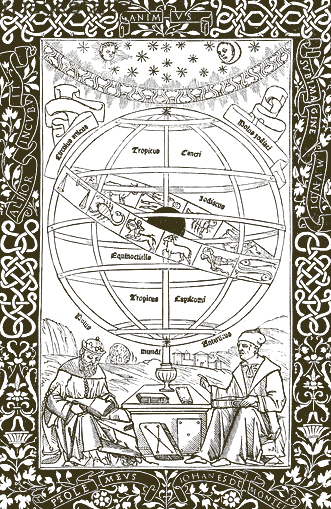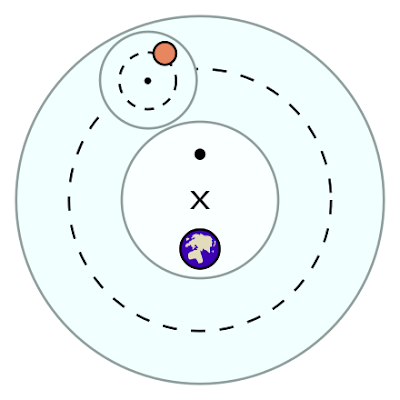#2: BASKET WEAVING IN THE PALEOLITHIC?
FINDING EVIDENCE OF BASKET-WEAVING
ASSUMPTIONS AND THE PROBLEM OF FINDING EVIDENCE
Absence of evidence is not evidence of absence.
Carl Sagan
After reading an almost forgotten book by noted French archeologist Gustave Chauvet, Dr. Paul Bahn wrote in 2001 that, “It is a long overdue development that, 90 years after Chauvet’s publication, prehistory seems ready to at last accept the probably HUGE IMPORTANCE OF BASKETRY [ED: my emphasis] and simple weaving in the Upper Palaeolithic.”
--------------
Bahn, Dr. Paul. (2001). "Palaeolithic weaving – a contribution from Chauvet." Antiquity, 75:271-272.
--------------
The book Dr. Paul Bahn is referring to is by Gustave Chauvet
French
Os, ivoires et bois de renne ouvrés de la Charente: Hypothèses Palethnographique
English
Bones, ivories and reindeer wood of Charente: Palethnographic hypotheses
(Publications de la Soc. arch, et hist, de la Charente), 1910.
Book cover
Chauvet, Gustave. Os, ivoires et bois de renne ouvrés de la Charente: Hypothèses Palethnographique
English: Bones, ivories and reindeer wood of Charente: Palethnographic hypotheses
(Publications de la Soc. arch, et hist, de la Charente), 1910.
The problem was and still is: how to find evidence of basket material and constructions that leave few traces.
Page of found Paleolithic tools from Chauvet's book.
"In whichever way archaeological remains are interpreted, one must always be aware that the vast majority of the materials with which prehistoric people were surrounded and with which they worked is lost to us today. ...organic materials start to decay as soon as they are deposited in the ground."
-----------------
Grömer, Dr. Karina. "An Introduction to Prehistoric Textiles." Brewminate.com, Natural History Museum, Vienna, March 01, 2016,
https://brewminate.com/an-introduction-to-prehistoric-textiles Accessed 09/23/2020.
"This lack of archaeological visibility contrasts with the importance attributed to these perishable materials and techniques in some [contemporary] ethnoarchaeological studies, which highlight the extremely high proportion of objects made with them and the techniques compared to those made from stone and bone."
-----------------
Aura Tortosa, J., Pérez-Jordà, G., Carrión Marco, Y. et al. "Cordage, basketry and containers at the Pleistocene–Holocene boundary in southwest Europe. Evidence from Coves de Santa Maira (Valencian region, Spain)." Veget Hist Archaeobot 29, 581–594 (2020). https://doi.org/10.1007/s00334-019-
--- While almost all researchers agree that plant and vegetation was used to create a technology along with stone tools, there has been very little agreement about that technology..
--- Some experts believe that technologies based on plant material comprised the vast majority of the tools hominins used -- but due to decay very little evidence has survived.
--- Therefore research and theories have been biased when it come to evidence. Stone tools have survived, while plant tools have not. So theories about the past have been based on stone artifacts, but their importance may be exaggerated.
The further we go back in prehistory the harder it is to find evidence. We must be creative and most of that evidence will be indirect. The problem was and still is that authorities have insisted instead on clear evidence.
"The conventional wisdom has been that a time-consuming task like weaving would only be practiced by sedentary, agrarian cultures. [ED: i.e., Neolithic societies]" said Dr. Adovasio in an interview with Discovery Magazine. Until thee was evidence to the contrary, prehistorians believed that basket weaving began in the Neolithic era.
----------------
Menon, Shanti. "The Basket Age." Discovery Magazine,
However, this was only an assumption which was not based on facts. Even around 1900 there was contemporary evidence that this opinion was wrong. Nomadic hunter-gatherers, North American Apache Indians, were known for their highly skilled basket making: this was documented in detail in 1904 (6 years before the publication of Chauvet's book) in a US Smithsonian publication.
-----------------------
Aboriginal American Basketry: studies in a textile art without machinery. Contributors: Mason, Otis Tufton; Coville, Frederick Vernon. Annual Report of the Board of Regents of the Smithsonian Institution; Report of the U.S. National Museum. Washington: Government Printing Office, 1904.
-----------------------------
"Basket, Apache people, Arizona, ca. 1900,
coiled willow and devil's claw - Chazen Museum of Art."
In addition there has always been considerable indirect evidence because basketry has a long history and ancient traditions. Baskets were/are made by virtually all societies on all continents (except Antarctica). They were/are made with different kinds of weaves that each culture developed using a wide variety of local materials including roots, bark, branches, needles, etc. These are used to make a wide a full range of baskets such as soft bags, hard carry baskets and large back (burden) baskets, for example. Also the weave could be open to make nets or fish traps, or tightly closed to make baskets for carrying water. There were even baskets for cooking; hot rocks were put into a specially designed basked with food and allowed to cook. Furthermore baskets often played a role in mythologies, indicating that they were an old technology.
While many think of basketry as humble and banal, they do not grasp its simple complexity.
"Though it would appear that basketry might best be defined as the art or craft of making baskets, the fact is that the name is one of those the limits of which seem increasingly imprecise the more one tries to grasp it. The category basket may include receptacles made of interwoven, rather rigid material, but it may also include pliant sacks made of a mesh indistinguishable from netting—or garments or pieces of furniture made of the same materials and using the same processes as classical basket making. In fact, neither function nor appearance nor material nor mode of construction are of themselves sufficient to delimit the field of what common sense nevertheless recognizes as basketry."
In addition, I believe there were other biases, which were never articulated, but prevented researchers from believing in the importance of basket weaving.
ASSUMPTION: BASKETS ARE NOT TOOLS.
This is an example of misconception. Baskets are tools. By every definition I can find, baskets are tools but they have rarely been given the "tool" status that stone tools have been given. Woven-fiber technology was capable of making a complete range of tools which were strong, durable and light. These tools could be very small or vary large and custom made for different tasks.
This Native American Indian Coastal-Pomo woman is gathering seeds
using a paddle made with woven-fiber technology.
This paddle is a tool designed to hit and free the seeds
on the plant so that they fall into the large basket.
ASSUMPTION: IT WAS ASSUMED THAT BASKETRY WAS, IN ANY CASE, NOT IMPORTANT
and certainly not as important as stone tools. This is an example of hiding in plain sight.
Speaking about the lack of archaeological interest in basketry, mats and textiles, Grace M. Crowfoot wrote the following in A History of Technology, Volume 1. "In considering gaps in the knowledge of textiles, it must be remembered that there are vast areas where little archaeological study has been undertaken...Surviving pieces of rag were often rejected as without interest...Determination of the exact botanical origin of the fibres used in basketry and weaving has only quite recently been recognized as of archaeological importance."
------------------
Charles Singer, E.J. Holmyard, A.R. Hall. A History of Technology, Volume I: From Early Times to Fall of Ancient Empires. Oxford University Press, 1954. (Kindle location = 8905)
FACT: Basket making and woven-fiber technology were critical for not only baskets but rope and thread. This technology was also used to make hats, shoes, and even suspension rope bridges. The technology was versatile and a mainstay of just about every culture.
ASSUMPTION: BASKET MAKING WAS WOMEN'S WORK
and therefore not important.
FACT: Yes, in many cases baskets were made by women, which should have nothing to do with the value of their work. Native American Indians revered the highly sophisticated processes and creations of their women and many baskets were handed down for generations.
Dr. Adovasio, a world leading expert on basketry, had this to say. Not only did he learn to appreciate "the incredible technical diversity of prehistoric basketry, but [he also developed] an ever-escalating appreciation of what one of [his] colleagues, Bob Bettinger, call[ed] "soft technology." Significantly, and in sharp contrast to lithic [e.g. stone tools] or durable technology--which is usually the province of males--basketry, cordage, netting, and related plantfiber-derived products are often the work of females. Almost unconsciously, at least at first, I was developing a view of past societies and their actions that was by default far more oriented to female activities as opposed to the macho-male orientation derived from stone tools."
(Adovasio, 2006, p. 37)
Also simple basic logic was ignored. Since baskets are and have been so pervasive in virtually all cultures and allowed people to carry and gather much more food or material, it is only logical to explore the possibility that this might have been another technology that developed along with stone tools.
Bahn (2001) discovered when rereading the book of the French archaeologist Gustave Chauvet that "some of these early French excavators both found and interpreted several items as related to advanced textile manufacture. In his book Chauvet has a special section on the possibility of basketry and weaving in the Magdalenien (from around 17,000 to 12,000) context. Well aware of the fact that he could not hope for finding direct textile remains, he turned to both possible tools and textile engravings in bones e.g. from the Grotte de Placard" (Bahn, 2001:272).
"Chauvet also relied on observations done by other contemporary archaeologists e.g., the discovery that a bone tool could have been used for splitting flexible bark. Bark and bast from the lime (linden) tree were still used as raw material for making cords in the medieval time in France."
MasterOneYearWigforss20140401.pdf
Thus Chauvet put together a number of indirect observations that he believed supported the idea of basketry before the Neolithic era. And this became the basis for his hypothesis.
But all this fell on deaf ears. Authorities made clear that unless irrefutable evidence was found, evidence that could be dated, prehistorians would assume that basketry began in the Neolithic. So for 90 years, that opinion did not change.
FINDING EVIDENCE
Then a miracle occurred. It was not actual baskets, but it was clear distinct impressions of weaving in fired clay that could be accurately dated.
Drs. James M. Adovasio and Olga Soffer discovered woven fiber impressions in fired clay fragments at the Paleolithic site of Pavlov in the Czech Republic.
Gustave Chauvet had suggested with his basket weaving hypothesis, that basketry might have begun around 17,000 (BCE) but this find now pushed the timeline back another 10,000 years. These fragments, dating at 27,000 years, revealed distinct woven patterns likely from plant fibers "like milkweed, nettle, or the fibrous bark of yew or alder." The discovery clearly indicated that weaving was practiced by hunter-gatherer cultures, not just settled, agrarian societies. And it did not first occur in the Neolithic time period but instead in the Upper Paleolithic ear.
And there was more. They discovered evidence of more than one kind of weave. In particular one weave was a 'plain weave' which almost always required a loom, such as a simple basic 'hand loom.'
But this discovery by Drs. Soffer and Adovasio has even greater implications. Accepting the fact that hunter-gatherers utilized basket-weaving and simple textile weaving opens the door to a much greater time span for the development of these technologies. Before this the assumption had been that a sedentary Neolithic lifestyle was required. However, now this barrier has been overcome, I believe the entire Paleolithic period of the hominin hunter-gatherer existence should be examined -- meaning Upper, Middle, and even Lower Paleolithic.
I began this section with this quote from Dr. Paul Bahn who wrote in 2001 “It is a long overdue development that, 90 years after Chauvet’s publication, prehistory seems ready to at last accept the probably HUGE IMPORTANCE OF BASKETRY [ED: my emphasis] and simple weaving in the Upper Palaeolithic.”
So, you might ask, what is the huge importance of confirming that sophisticated basketry existed in the Upper Paleolithic? It means that perhaps there was a "soft technology" that developed along with stone tools for a million years or so. This discovery may rewrite many ideas about the human development of technology and also culture and even human evolution.
FROM BASKETS TO SHIPS:
IT MAY HAVE TAKEN 100s OF 1000s OF YEARS
[TOP] A carry basket. using a simple design, made by the Xerente (Sherenté),
an indigenous people in Brazil.
It may have taken more than half a million years for the skills needed to make this basic basket to evolve into the skills needed to make this seagoing ship made of reeds that could carry 50 tons of cargo and sail the Persian Gulf.
[BOTTOM] "Model of the reed boat Tigris, boat of Thor Heyerdahl."
This recreation of a Mesopotamian reed ship could carry 50 tons of cargo. Thor Heyerdahl built the full-scale ship to prove the seaworthiness of reed ships. He sailed the Tigris with no problems for 5 months in the Persian Gulf.






.jpg)












AA.jpg)










A.jpg)
.jpg)


.jpg)






_small.jpg)
.jpg)
